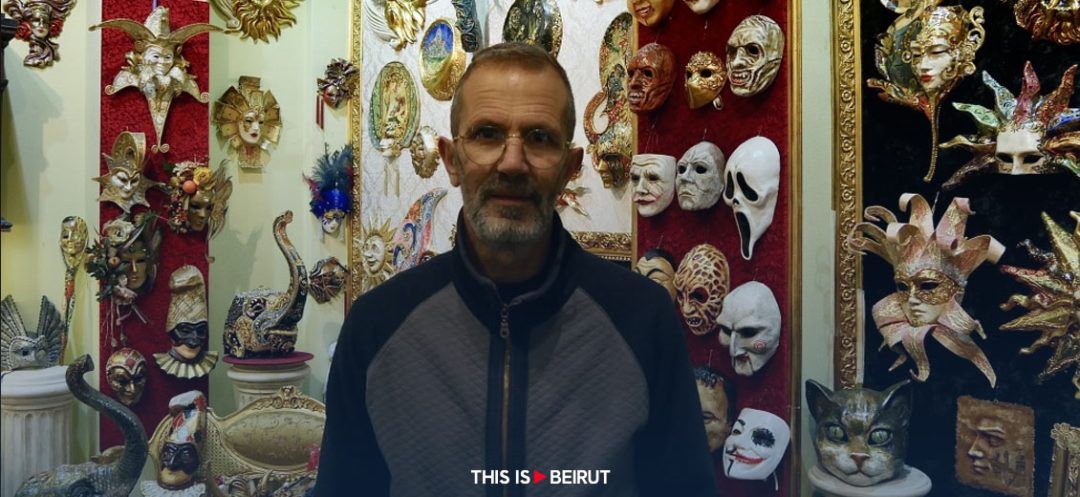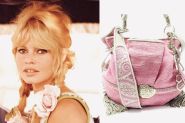
Tucked away on the outskirts of the city of Shkodër, in northern Albania, the Venice Art Mask workshop emerges as the epicenter of a globally reaching artistic industry one would not expect to find outside the city of Venice.
In a hidden street in Shkodër, northern Albania, a sign bearing the name Venice Art discreetly hangs on a gate leading to a quiet courtyard. Inside, two white buildings stand out in the decor of the neighborhood’s dilapidated houses. These are the workshop and gallery of Venice Art Mask, a business founded in 1997 by Edmond Angoni, an artist who learned the craft after living in Venice.
Today, the workshop employs about ten people in the city and exports its masks worldwide. The site has become a tourist reference during visits to Shkodër, the cradle of Albanian culture.
Erton Rrukaj, the company’s manager, welcomes us into the gallery. A burst of colors greets our eyes. Hundreds of masks are displayed throughout the room, ready for sale. Simple ones, with feathers, animal faces, entire paintings drawn on heads, crystals… There’s something for everyone.
The Journey of an Artist
Behind this art lies a man who has been practicing this craft for nearly thirty years. Edmond Angoni, the artist and founder of this workshop, joins us in the exhibition room, his jacket stained with paint.
Having emigrated to Venice in his youth, he reflects on what drove him to convert to the art of mask-making 28 years ago. “I was working in a different sector, but watching the artists work in Venice, I picked up what they were doing. When I returned to Albania, I started trying to reproduce the masks of the Comedia Dell’Arte, that’s how I began,” he tells us.
Year after year, this industry has grown. Today, the company owns eight stores in Venice and employs 25 people in the Venetian capital.
An Artistic Production of Several Steps
Upon entering the workshop, where photography is prohibited, we meet about a dozen artists, mostly women, at work on their tables. Each table represents a stage in the lengthy process of creating a mask. Here, there is no assembly line production. Each mask is almost unique, and no two are exactly alike.
It all starts with the clay mold, the negative, as Edmond Angoni, who makes the molds himself, points out. The papier-mâché, the raw material of the masks, is placed in the mold and left to dry for nearly 24 hours. Then the painting and decoration process begins.
Each artist is responsible for something: painting, applying feathers, adding ornaments with Swarovski pearls, paintings, and even arranging the fractures of the mask… It’s a series of twelve steps before a mask is ready to be displayed and sold.
“We don’t count the days; a mask doesn’t finish in a single day, the phases mean it takes time,” Edmond Angoni indicates. In recent years, the workshop has produced nearly 1700 different mask models. “Here, we don’t force employees to work at a certain pace,” insists Erton Rrukaj. “If an employee is tired, they won’t do a good job. They need to rest so that their work is optimal and they have the strength to be inspired.”
An International Clientele and Chinese Competition
The smallest masks sell starting from 25 euros. However, size drives up the prices, which can reach up to 25,000 euros depending on the dimensions of the mask, the materials used to produce it, for the most prestigious models.
The workshop supplies masks for the Venice Carnival where it sells 80% of its production, but the workshop does not rely solely on this event, which lasts only about ten days. The masks made in Shkodër have become luxury products worldwide, increasing demand. “I can’t tell you how many masks I sell each year, not because it’s a secret, but because I’m an artist,” he downplays. “Our clientele is spread out in different regions of the world like Las Vegas, New Orleans, France, Spain …,” says Edmond Angoni.
“Unlike masks produced in China, we use the traditional papier-mâché technique,” emphasizes Erton Rrukaj, the manager. “You just need to touch it to know the difference: a plastic mask is recognizable by the hard noise it makes when touched, while an authentic papier-mâché mask will resonate with a dry sound.”
An artistic industry that also benefits its region. “People come to the workshop and then go to the citadel,” claims Edmond Angoni. His gallery attracts more and more tourists to Shkodër in the north of the country each year.
With "Le courrier de l'aigle"
In a hidden street in Shkodër, northern Albania, a sign bearing the name Venice Art discreetly hangs on a gate leading to a quiet courtyard. Inside, two white buildings stand out in the decor of the neighborhood’s dilapidated houses. These are the workshop and gallery of Venice Art Mask, a business founded in 1997 by Edmond Angoni, an artist who learned the craft after living in Venice.
Today, the workshop employs about ten people in the city and exports its masks worldwide. The site has become a tourist reference during visits to Shkodër, the cradle of Albanian culture.
Erton Rrukaj, the company’s manager, welcomes us into the gallery. A burst of colors greets our eyes. Hundreds of masks are displayed throughout the room, ready for sale. Simple ones, with feathers, animal faces, entire paintings drawn on heads, crystals… There’s something for everyone.
The Journey of an Artist
Behind this art lies a man who has been practicing this craft for nearly thirty years. Edmond Angoni, the artist and founder of this workshop, joins us in the exhibition room, his jacket stained with paint.
Having emigrated to Venice in his youth, he reflects on what drove him to convert to the art of mask-making 28 years ago. “I was working in a different sector, but watching the artists work in Venice, I picked up what they were doing. When I returned to Albania, I started trying to reproduce the masks of the Comedia Dell’Arte, that’s how I began,” he tells us.
Year after year, this industry has grown. Today, the company owns eight stores in Venice and employs 25 people in the Venetian capital.
An Artistic Production of Several Steps
Upon entering the workshop, where photography is prohibited, we meet about a dozen artists, mostly women, at work on their tables. Each table represents a stage in the lengthy process of creating a mask. Here, there is no assembly line production. Each mask is almost unique, and no two are exactly alike.
It all starts with the clay mold, the negative, as Edmond Angoni, who makes the molds himself, points out. The papier-mâché, the raw material of the masks, is placed in the mold and left to dry for nearly 24 hours. Then the painting and decoration process begins.
Each artist is responsible for something: painting, applying feathers, adding ornaments with Swarovski pearls, paintings, and even arranging the fractures of the mask… It’s a series of twelve steps before a mask is ready to be displayed and sold.
“We don’t count the days; a mask doesn’t finish in a single day, the phases mean it takes time,” Edmond Angoni indicates. In recent years, the workshop has produced nearly 1700 different mask models. “Here, we don’t force employees to work at a certain pace,” insists Erton Rrukaj. “If an employee is tired, they won’t do a good job. They need to rest so that their work is optimal and they have the strength to be inspired.”
An International Clientele and Chinese Competition
The smallest masks sell starting from 25 euros. However, size drives up the prices, which can reach up to 25,000 euros depending on the dimensions of the mask, the materials used to produce it, for the most prestigious models.
The workshop supplies masks for the Venice Carnival where it sells 80% of its production, but the workshop does not rely solely on this event, which lasts only about ten days. The masks made in Shkodër have become luxury products worldwide, increasing demand. “I can’t tell you how many masks I sell each year, not because it’s a secret, but because I’m an artist,” he downplays. “Our clientele is spread out in different regions of the world like Las Vegas, New Orleans, France, Spain …,” says Edmond Angoni.
“Unlike masks produced in China, we use the traditional papier-mâché technique,” emphasizes Erton Rrukaj, the manager. “You just need to touch it to know the difference: a plastic mask is recognizable by the hard noise it makes when touched, while an authentic papier-mâché mask will resonate with a dry sound.”
An artistic industry that also benefits its region. “People come to the workshop and then go to the citadel,” claims Edmond Angoni. His gallery attracts more and more tourists to Shkodër in the north of the country each year.
With "Le courrier de l'aigle"
Read more




Comments